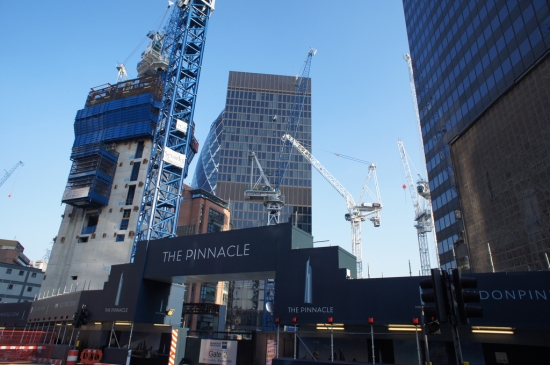Throughout the recession London gave the impression that it was insulated from the cold economic winds that swept the rest of the country. New commercial buildings continued to appear on the skyline while, in the provinces, investment disappeared and development all but ground to a halt.

Now a new paper from the London Assembly reveals that this account does not tell the whole story. Instead it draws attention to the fact that, while the commercial property market remains buoyant, construction orders in the capital have fallen by almost a quarter in two years.
The summary lists low confidence and falling public investment as the chief causes of this and claims that small and medium sized construction firms have been hit the hardest by the fall.
Landmark construction projects, such as the Cheesegrater and the Walkie-Talkie, continue to grab the headlines but, at the same time, a number of commercial developments have either stalled or been cancelled contributing to the downturn.
Heading the list is the Pinnacle. Construction of the skyscraper began in 2008 but is currently at a standstill pending a re-design. The original plans were for a 945 ft tower which would have made it the tallest building in the City.
Also on hold is the the 40 storey 100 Bishopsgate, which promises to deliver 900,000 sq ft of office and retail space. Another is the distinctive Can of Ham where construction hasn’t yet begun despite being granted planning permission in 2008. Principal Place, London Wall Place and Trinity One can also be added to the list.
The paper contains a number of recommendations which could help to boost the construction sector in which 150,000 skilled workers are unemployed nationally. These include removing barriers to encourage development and pushing ahead with the retrofitting of existing housing.
Assembly member Stephen Knight, Chair of the Economy Committee, stresses the importance of the construction sector to the London economy. He says that the paper is a ‘snapshot’ of the industry at this particular time and that the committee will continue to monitor its progress.
Meanwhile it has been reported that the number of empty shops in London is twice as bad as feared. According to data gathered by local authorities, 7,000 shops are now standing empty, costing the economy an estimated £350 million in lost trade. The body representing London’s councils has called for ‘radical action’ to stimulate growth and address high street decline.
Previous Post
Zero Hours Contracts Come Under Fire